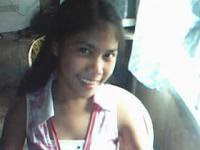Evidence for Plate Tectonics:
Plate Boundaries
You may have noticed the shapes of the continents fit together like a puzzle; for example look at the shapes of the east coast of South America and the west coast of Africa in the figure below.
The edges of the tectonic plates are called plate boundaries, and events such as earthquakes, volcanoes and tsunamis originate at these narrow boundary zones between the plates. The locations of earthquakes and volcanoes also provide evidence for plate tectonics.
The red indicates locations of earthquake activity and 'hot zones'. These locations mostly correspond to the edges of the tectonic plates. Hot zones occur where rock from the mantle has melted, finds a weak spot in the Earth's crust, and moves to the surface, releasing heat, gasses, and rock causing a volcanic eruption. (graphic courtesy of
WHOI)
Most island formation occurs at tectonic plate boundaries. However, the Hawaiian Islands are an example of a hot zone occuring in the middle of the Pacific Plate on the sea floor. The molten magma breaks through a thin part of the crustal plate causing undersea volcanos. Some of these volcanos build to the surface of the ocean, becoming islands.
See this web site for more details on the formation of the Hawaiian IslandsPlate Interactions
Different type of interactions occur between plates as they move around, producing different types of earthquakes and volcanos. Plates may pull apart, collide, or scrape past each other. The stress and strain produced by moving plates builds up in the Earth's hard crust until eventually the crust breaks and the blocks move in opposite directions along a fracture, called a fault. This sudden movement generates an earthquake.
Plates moving apart produce a divergent plate bounary. Almost all of the Earth's new crust forms at divergent boundaries. When the plates move away from each other the magma from the mantle rises up and forces its way to the surface in a lava flow, where it solidifies as new crust.
Many divergent plate margins are under the oceans, creating long undersea rift zones that fill with lava - called mid-ocean ridges. This is where
hydrothermal vents are found, which have diverse assemblages of extraordinary animals and bacteria that are supported by the chemically rich waters emanating from the vents.
Click here for more on hydrothermal vents.Plates pushing against each other or are colliding produce a convergent plate boundary. This type of boundary results in one plate is being pulled beneath another (subduction) forming a deep trench. The long, narrow zone where the two plates meet is called the subduction zone. Here, a more dense oceanic crust is being subducted under the less dense continental crust. Subduction zones tend to create large, cone-shaped volcanos called stratovolcanos, such as Mt. St. Helens and Mt. Baker in Washington State.
An example of this type of convergence occurrs off the west coast of Canada, and the USA, where the smaller Juan de Fuca plate is being subducted beneath the larger North American plate, and is called the Cascadia Subduction Zone.
Click here to find out more.A transform plate boundary occurs where one plate grinds past another, side by side.
An example of this type of boundary occurs off the west coast of California, and separates the Pacific plate from the North American plate along the San Andreas fault - a famous plate that is responsible for many of California's earthquakes.
